
First Time Buyers Guide
Where to Start?
There’s no one “perfect” telescope — just as there’s no such thing as a perfect car or a perfect house. Instead, you should choose a telescope based on your observing interests, lifestyle, and budget. Many (arguably most) good starter scopes cost $400 or more, though some superb choices are available for under $250.
Here is a guide to help you make sense of the world of telescope models available today. Armed with these few basics, you’ll have a good idea what to look for (and what to avoid) when scouring the marketplace for your new scope.
There are two essentials to look out for: high-quality optics and a steady, smoothly working mount. And all other things being equal, big scopes show more and are easier to use than small ones, but don’t overlook portability and convenience — the best scope for you is the one you’ll actually use.
There Are Three Main Types Of Telescopes
Generally, telescopes fall into 3 different categories; Refractors, Reflectors and Compound telescopes. These three telescope types use different optics to achieve the same result: making distant objects look bigger and brighter than they appear to your eye.
REFRACTORS have a lens at the front of the tube — it’s the type you’re probably most familiar with. While generally low maintenance, they quickly get expensive as the aperture increases.
REFLECTORS gather light using a mirror at the rear of the main tube. For a given aperture, these are generally the least expensive type, but you’ll need to adjust the optical alignment every now and then.
COMPOUND (or catadioptric) telescopes, which use a combination of lenses and mirrors, offer compact tubes and relatively light weight; two popular designs you’ll often see are called Schmidt-Cassegrains and Maksutov-Cassegrains.
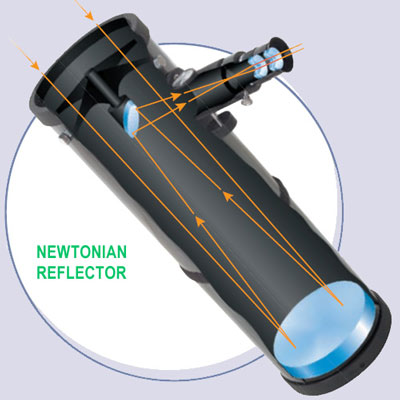
ADVANTAGES
- Lowest cost per inch of aperture
- Simple design, easy to adjust and modify
- Viewing from top of tube allows short tripod (or none in case of Dobsonian)
DISADVANTAGES
- Requires periodic adjustment (collimation)
- Open tube is prone to collect dust
- Usually biggest tube per unit of aperture.
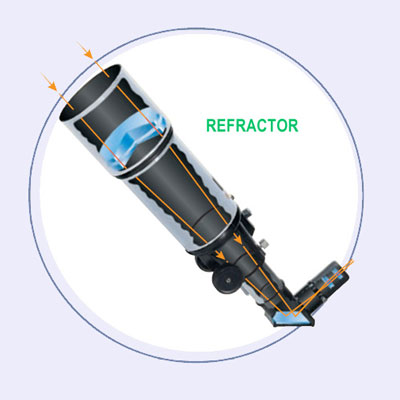
ADVANTAGES
- Best performance per inch of aperture
- Rugged construction, sealed tube
- Usually no need for user adjustment
- Quick cooldown
DISADVANTAGES
- Highest cost per inch of aperture
- Long tube with eyepiece at rear requires tall mount.
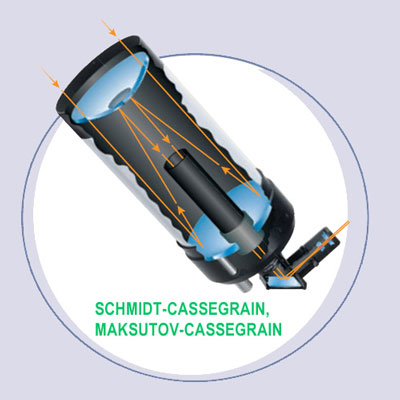
ADVANTAGES
- Most compact tube per inch of aperture
- Short tube is easy to mount
- Eyepiece height varies least
- Sealed tube
DISADVANTAGES
- Fairly high cost per inch of aperture
- Requires periodic adjustment (collimation)
- Longest cooldown time of any design.
Things To Consider When Buying A Telescope
What Do You Want To Do With Your Telescope?
If transporting your telescope to different sites is an important criteria for you take a look at our range of collapsible telescopes – designed to be portable and simple to put together.
What Do You Want To See?
Cheaper models will give you a close range and are suitable for looking at the moon whereas costlier models allow you to see further into space. If you want to do astrophotography, it’s much easier to learn on a small scope than a big one.
What Is Your Budget?
Telescopes vary greatly in price – starting from around $150 up to many thousands – so it’s a good idea to set your budget at the beginning. Make sure you have a look at the advantages and disadvantages of the the various telescope types above.
Space, Where To Put It?
Where is your telescope going to live? The common thought is that a telescope will take up a lot of room and some can, but they can also be small and compact. We have a wide range of sizes from the neatly sized TableTop Dobsonians right up to the giant light bucket 20″ Stargate Dobsonian that stands at just over 2 metres.
Will I Need A Mount For My Telescope?
It depends on what type of telescope you buy – the TELESCOPE KITS include the mount. The Dobsonian telescopes don’t need a mount whereas the OTAs are just tubes and definitely need a mount. Read more about mounts further down the page.
Aperture: A Telescopes Most Important Feature
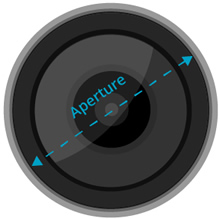
The most important characteristic of a telescope is its aperture — the diameter of its light-gathering lens or mirror, often called the objective. Look for the telescope’s specifications near its focuser, at the front of the tube, or on the box. The aperture’s diameter (D) will be expressed either in millimeters or, less commonly, in inches (1 inch equals 25.4 mm). As a rule of thumb, your telescope should have at least 2.8 inches (70 mm) aperture — and preferably more.
A larger aperture lets you see fainter objects and finer detail than a smaller one can. But a good small scope can still show you plenty — especially if you live far from city lights. For example, from a dark location you can spot dozens of galaxies beyond our own Milky Way through a scope with an aperture of 80 mm (3.1 inches). But you’d probably need a 6- or 8-inch telescope to see those same galaxies from a typical suburban backyard. And regardless of how bright or dark your skies are, the view through a telescope with plenty of aperture is more impressive than the view of the same object through a smaller scope.
Mounts: Supporting Your Telescope
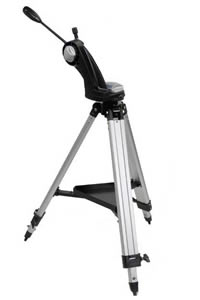
Astronomers consider their telescope’s mount to be equally as important as the telescope/optical tube – and sometimes spend more money on the mount than what is sitting on top of it.
A mount’s job is to:
- Keep the telescope from shaking – at high power, every little wobble or vibration is magnified so much that the whole image can become un-viewable.
- Allow the telescope to move extremely smoothly. Celestial objects don’t stand still for you to look at. Or, more precisely, they do stand still, but they appear to move across the sky as Earth rotates underneath you.
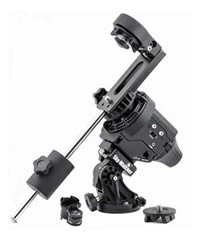
Your telescope will need something sturdy to support it. Many telescopes come conveniently packaged with tripods or mounts (see our Telescope Kits). Be aware that a tripod that’s good enough for taking your family snapshots may not be steady enough for astronomy. Mounts designed specifically for telescopes usually forgo the single-screw attachment blocks in favour of larger, more robust rings or plates.
On some mounts the scope swings left and right, up and down, just as it would on a photo tripod; these are known as altitude-azimuth (or simply alt-az) mounts. Many reflectors come on an elegantly simple wooden platform, known as a Dobsonian, that’s a variation of the alt-az mount. A more involved mechanism, designed to track the motion of the stars by turning on a single axis, is termed an equatorial mount. These tend to be larger and heavier than alt-az designs; to use an equatorial mount properly you’ll also need to align it to Polaris, the North Star.
Some telescopes come with small motors to move them around the sky with the push of a keypad button. In the more advanced models of this type, often called “GO TO” telescopes, a small computer is built into the hand control. Once you’ve entered the current date, time, and your location (and many newer models don’t even require you to do that), the scope can point itself to, and track, thousands of celestial objects. Some “GO TO”s let you choose a guided tour of the best celestial showpieces, complete with a digital readout describing what’s known about each object.